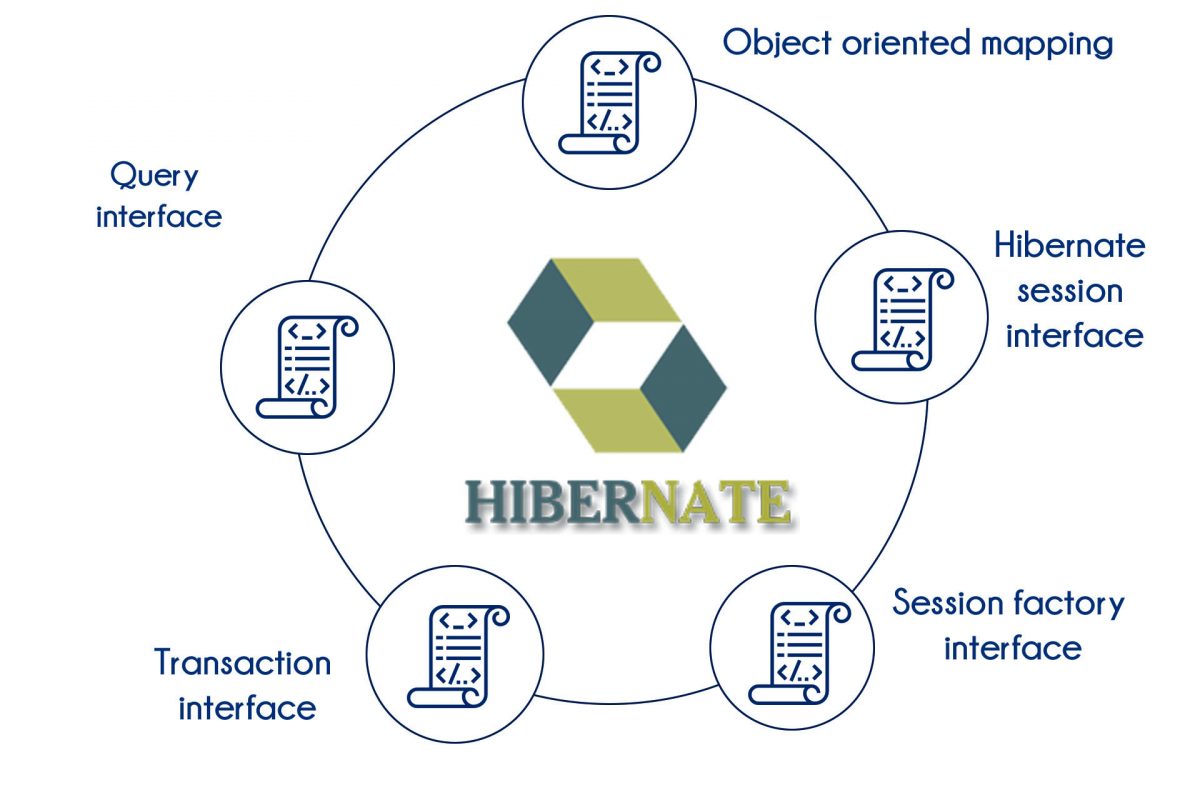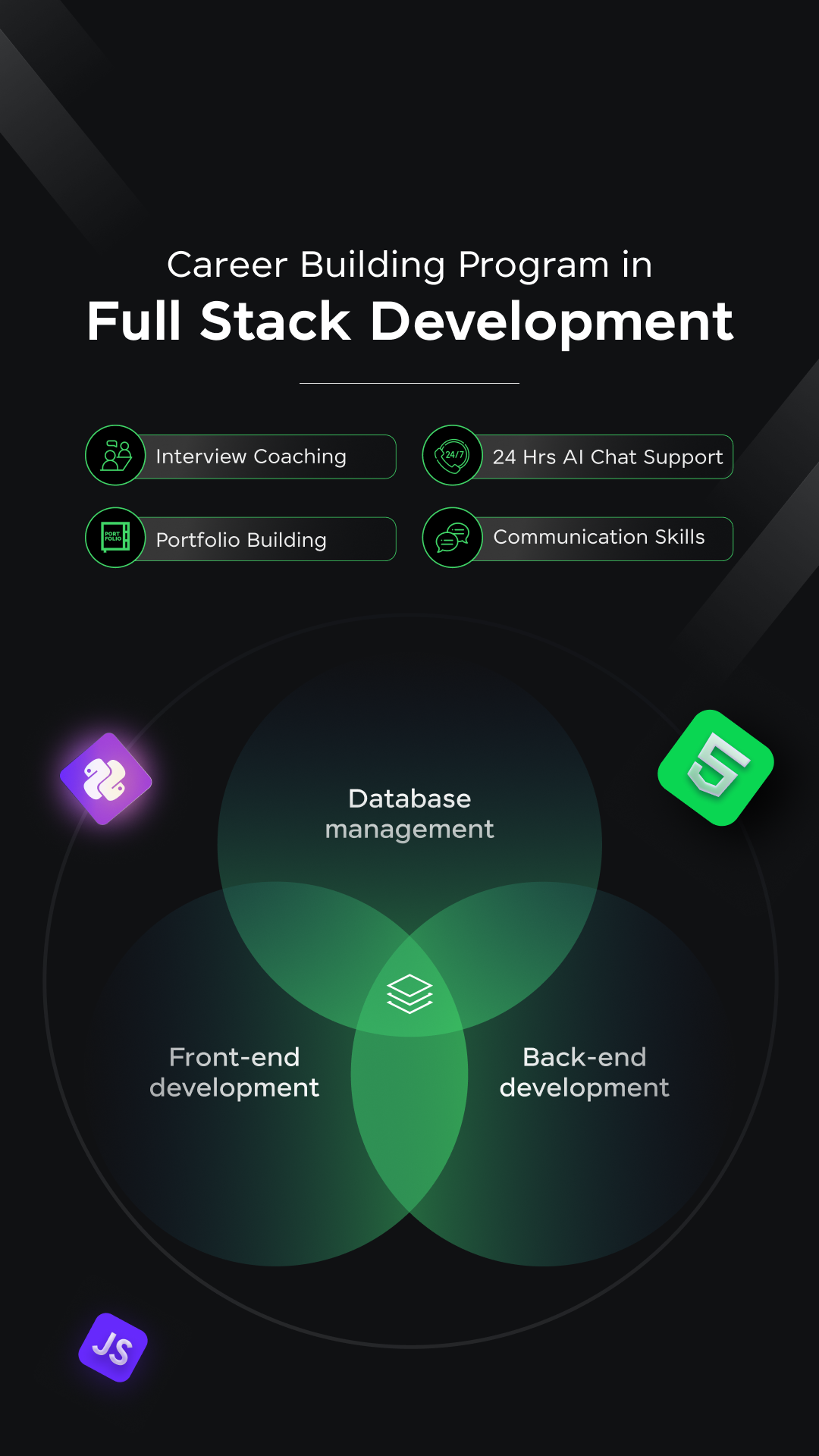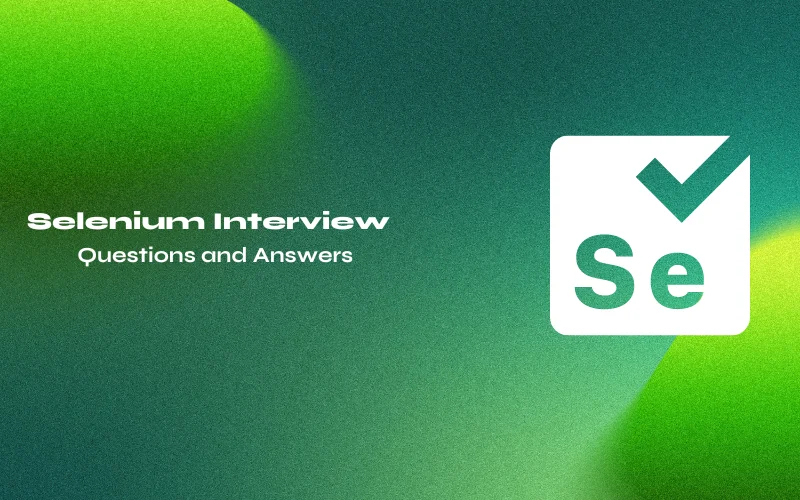
Top 26 Hibernate Interview Questions and Answers (2024)
Sep 24, 2024 9 Min Read 1457 Views
(Last Updated)
If you’re at a technical job interview, the last thing you want is to get stumbled on a basic fundamental question. It’s incredibly annoying if you’re well-versed in the subject but could have used a quick refresher. Today, we will unveil some of the most often asked Hibernate interview questions, along with answers. Hibernate is one of the essential framework skills if you’re going for Java developer, J2ee, and Spring Jobs.
Hibernate is an open-source, high-performance, object-relational mapping (ORM) framework for Java. It simplifies database programming and provides a layer of abstraction between the application and the underlying database. With Hibernate, developers can map Java classes to database tables, and the framework takes care of the rest.
Hibernate is widely used in enterprise applications, and therefore, it is a must-have skill for Java developers. In this article, we will discuss the top Hibernate interview questions and answers that will help you prepare for your next interview.
Table of contents
- Commonly Asked Hibernate Interview Questions and Answers
- What is Hibernate Framework?
- What are the benefits of using Hibernate Framework?
- What is Object-Relational Mapping (ORM)?
- What is the difference between Hibernate and JDBC?
- What is a Session in Hibernate?
- What is a Transaction in Hibernate?
- What is Hibernate caching?
- What is the difference between first-level and second-level caching in Hibernate?
- What is lazy loading in Hibernate?
- What is the difference between eager loading and lazy loading in Hibernate?
- What is HQL (Hibernate Query Language)?
- What is the difference between HQL and SQL?
- What is the purpose of the Hibernate Configuration file?
- What is a Mapping file in Hibernate?
- What is a Hibernate SessionFactory?
- What is the difference between the get() and load() methods in Hibernate?
- What is the meaning of the @OneToMany annotation in Hibernate?
- What is the meaning of the @ManyToOne annotation in Hibernate?
- What is the difference between @ManyToOne and @OneToMany annotations in Hibernate?
- What is the meaning of the @JoinColumn annotation in Hibernate?
- Top Hibernate Interview Questions - For experienced
- How can we see Hibernate-generated SQL on the console?
- What are the design patterns that are used in the Hibernate framework?
- Mention some important annotations used for Hibernate mapping?
- How can the primary key be created by using Hibernate?
- How to integrate Hibernate with Spring?
- What's persistence in Hibernate?
- FAQs
- What is the purpose of Hibernate in Java?
- Is Hibernate a database?
- Can Hibernate be used with Spring Framework?
Commonly Asked Hibernate Interview Questions and Answers
On the account of many Java developers who have been through multiple JAVA interviews, we’ve tried to summarize a list of Top Hibernate Interview Questions and Answers.
Before proceeding further, make sure you have a strong grasp of essential concepts in Java Full Stack Development, including front-end frameworks, back-end technologies, and database management. If you’re looking for a professional future in Java Full Stack Development, consider joining GUVI’s Java Full Stack Development Course. With placement assistance included, you’ll master the Java stack and build real-world projects to enhance your skills.
1. What is Hibernate Framework?
Hibernate is an open-source ORM framework that is used to map Java classes to database tables. It provides a high-level abstraction for database programming and makes it easier for developers to interact with the database.
Hibernate provides a set of APIs for performing CRUD operations and allows developers to write database queries in a platform-independent manner. To install the latest version of Hibernate Framework, follow this page.
2. What are the benefits of using Hibernate Framework?
- Simplifies database programming
- Reduces development time
- Provides a layer of abstraction between the application and the database
- Improves performance by providing efficient database access
- Supports caching and lazy loading
- Provides a platform-independent way of writing database queries
3. What is Object-Relational Mapping (ORM)?
ORM is a programming technique that allows developers to map object-oriented programming concepts to relational databases. ORM frameworks like Hibernate provide a set of APIs that allow developers to interact with the database in an object-oriented manner.

4. What is the difference between Hibernate and JDBC?
Hibernate is a high-level ORM framework that provides a set of APIs for performing database operations. JDBC is a low-level API that allows developers to interact with the database directly. Hibernate provides a layer of abstraction between the application and the database, whereas JDBC requires developers to write SQL queries to interact with the database.
5. What is a Session in Hibernate?
A Session is a lightweight object that is used to interact with the database in Hibernate. It provides a set of APIs for performing CRUD operations, and developers can use it to perform database transactions.
6. What is a Transaction in Hibernate?
A Transaction is a set of database operations that are performed as a single unit of work. In Hibernate, developers can use transactions to ensure that all database operations are performed successfully or rolled back in case of any error.
7. What is Hibernate caching?
Hibernate caching is a mechanism that allows Hibernate to store frequently accessed data in memory for faster access. Hibernate supports two types of caching: first-level caching and second-level caching.
8. What is the difference between first-level and second-level caching in Hibernate?
First-level caching is a Hibernate-specific cache that stores objects in the Session object. It is enabled by default and is only valid for a single Session. Second-level caching is a cache that is shared by multiple Sessions and is used to store frequently accessed data for faster access.
Heading for a Java Interview? Read this quick refresher for most-often asked Java Interview Questions.
9. What is lazy loading in Hibernate?
Lazy loading is a technique used by Hibernate to defer the loading of related entities until they are actually needed. This can improve performance by reducing the number of database queries required to load an object.
10. What is the difference between eager loading and lazy loading in Hibernate?
Eager loading is the default behaviour in Hibernate, where all related entities are loaded at once. Lazy loading, on the other hand, defers the loading of related entities until they are actually needed.
11. What is HQL (Hibernate Query Language)?
HQL is a Hibernate-specific query language that is used to write database queries in a platform-independent manner. It is similar to SQL, but instead of writing SQL queries, developers write HQL queries that are translated to SQL queries by Hibernate.
12. What is the difference between HQL and SQL?
HQL (Hibernate Query Language) and SQL (Structured Query Language) are both used to query data from a database. However, there are several differences between the two. Here are some of the main differences:
- Object-oriented vs. Relational: HQL is an object-oriented query language, while SQL is a relational query language. HQL queries are written in terms of objects and their properties, whereas SQL queries are written in terms of tables and columns.
- Syntax: The syntax of HQL is similar to SQL but with some differences. For example, in HQL, we use the name of the Java class instead of the name of the database table. We also use object properties instead of column names.
- Portability: HQL is more portable than SQL because it is not tied to any specific database. HQL queries can be executed on any database supported by Hibernate, whereas SQL queries can only be executed on the specific database for which they were written.
- Database-specific functions: SQL allows the use of database-specific functions and features, whereas HQL does not. HQL is designed to work with any database, so it only supports functions that are common to all databases.
- Caching: HQL results can be easily cached by Hibernate, whereas caching SQL queries is more difficult.
- Type safety: HQL is type-safe, meaning that it performs compile-time checks on the queries to ensure that they are valid. SQL is not type-safe, so queries may fail at runtime if they are not valid.
Overall, HQL is more object-oriented and portable, while SQL is more database-specific and powerful. Which one to use depends on the requirements of the application and the preferences of the developer.
13. What is the purpose of the Hibernate Configuration file?
The Hibernate Configuration file is used to configure the Hibernate framework. It contains information about the database connection, mapping files, cache settings, and other configuration parameters required by Hibernate.

14. What is a Mapping file in Hibernate?
A Mapping file in Hibernate is used to define the relationship between Java classes and database tables. It contains metadata that describes how Java objects should be mapped to database tables and columns.
15. What is a Hibernate SessionFactory?
The Hibernate SessionFactory is a factory class that is used to create Hibernate Session objects. It is a thread-safe and immutable object that is typically created only once during the application initialization process.

16. What is the difference between the get() and load() methods in Hibernate?
The get() and load() methods are used to retrieve an object from the database in Hibernate. The main difference between these two methods is that the get() method always hits the database and returns null if the object is not found, while the load() method returns a proxy object and hits the database only when the object is accessed for the first time.
17. What is the meaning of the @OneToMany annotation in Hibernate?
The @OneToMany annotation is used to define a one-to-many relationship between two entities in Hibernate. It is typically used to map a collection of child entities to a single parent entity.
18. What is the meaning of the @ManyToOne annotation in Hibernate?
The @ManyToOne annotation is used to define a many-to-one relationship between two entities in Hibernate. It is typically used to map a single child entity to a collection of parent entities.
19. What is the difference between @ManyToOne and @OneToMany annotations in Hibernate?
The @ManyToOne and @OneToMany annotations are used to define relationships between entities in Hibernate. The main difference between these two annotations is that @ManyToOne is used to map a single child entity to a collection of parent entities, while @OneToMany is used to map a collection of child entities to a single parent entity.
Top 5 Java Programs for Freshers
20. What is the meaning of the @JoinColumn annotation in Hibernate?
The @JoinColumn annotation is used to specify the join column that is used to join two tables in Hibernate. It is typically used in conjunction with the @ManyToOne or @OneToOne annotations.
Top Hibernate Interview Questions – For experienced
So now that we are finished with pointer questions, let’s dial up a little & list down a few more questions, particularly addressed for intermediate & advanced levels.
21. How can we see Hibernate-generated SQL on the console?
In Hibernate, we can see the generated SQL on the console by enabling logging. Here are the steps to enable logging in Hibernate:
- Open the
log4j.propertiesfile orlogback.xmlfile (depending on the logging framework you’re using). - Add the following configuration to the file to enable logging for Hibernate:
For log4j:
# Log Hibernate generated SQL
log4j.logger.org.hibernate.SQL=DEBUG
log4j.logger.org.hibernate.type=TRACEFor logback:
<!-- Log Hibernate generated SQL -->
<logger name="org.hibernate.SQL" level="debug" additivity="false">
<appender-ref ref="CONSOLE" />
</logger>
<logger name="org.hibernate.type" level="trace" additivity="false">
<appender-ref ref="CONSOLE" />
</logger>- Save the file and run your application.
After following these steps, Hibernate will log all the SQL queries it generates on the console, along with other helpful information like query parameters, execution time, etc.
Note: If you’re using a different logging framework or configuration, the syntax may be slightly different. However, the basic idea is the same – you need to enable logging for the org.hibernate.SQL and org.hibernate.type packages to see the generated SQL on the console.
22. What are the design patterns that are used in the Hibernate framework?
The Hibernate framework is built on several design patterns, which help to maintain the structure and organization of the code. Some of the design patterns used in Hibernate are:
- Factory pattern – Hibernate uses the SessionFactory interface as a factory to create Session objects, which are used to interact with the database.
- Singleton pattern – The SessionFactory is implemented as a singleton, which ensures that only one instance of it is created throughout the application.
- DAO pattern – The Data Access Object (DAO) pattern is used to provide a layer of abstraction between the application and the database. In Hibernate, the DAO pattern is implemented using the “HibernateTemplate” class.
- Proxy pattern – Hibernate uses the Proxy pattern to provide lazy loading of objects. When an object is loaded from the database, Hibernate creates a proxy object that represents the object. When the object is accessed for the first time, Hibernate retrieves the actual object from the database.
- Observer pattern – Hibernate uses the Observer pattern to track changes to objects. When an object is changed, Hibernate updates the database automatically.
- Decorator pattern – Hibernate uses the Decorator pattern to add functionality to objects at runtime. For example, Hibernate can add caching or logging functionality to objects without modifying their original behaviour.
These design patterns help to keep the code modular, maintainable, and scalable. By following these patterns, developers can build robust and efficient applications with Hibernate.
23. Mention some important annotations used for Hibernate mapping?
The following annotations make it easy to create and manage database objects from Java classes. Here are some of the most important annotations used for Hibernate mapping:
- @Entity – This annotation is used to specify that a Java class is an entity, which will be mapped to a database table.
- @Table – This annotation is used to specify the name of the database table that the entity will be mapped to.
- @Id – This annotation is used to specify the primary key column of the entity.
- @GeneratedValue – This annotation is used to specify how the primary key column should be generated, such as auto-increment, sequence, or identity.
- @Column – This annotation is used to specify the properties of a database column, such as name, type, length, nullable, etc.
- @OneToMany – This annotation is used to specify a one-to-many relationship between two entities.
- @ManyToOne – This annotation is used to specify a many-to-one relationship between two entities.
- @JoinColumn – This annotation is used to specify the foreign key column in a relationship.
- @Transient – This annotation is used to specify a field or property that should not be persisted in the database.
- @Enumerated – This annotation is used to specify that a field or property should be persisted as an enumerated type.
- @Temporal – This annotation is used to specify that a field or property should be persisted as a date or time type.
- @Lob – This annotation is used to specify that a field or property should be persisted as a large object, such as a text or binary file.
These are some of the most commonly used annotations for Hibernate mapping. By using these annotations, we can easily map Java classes to database tables and manage the database objects from Java code.
24. How can the primary key be created by using Hibernate?
In Hibernate, we can generate primary keys for entities in various ways. Here are some of the commonly used methods for creating primary keys using Hibernate:
- Identity: This is the most common way to generate primary keys in Hibernate. When the Identity strategy is used, the primary key is generated by the database, and Hibernate fetches it from the database after the object is saved. This is done by using the
@GeneratedValueannotation with thestrategyattribute set toGenerationType.IDENTITY.
Example:
@Id
@GeneratedValue(strategy = GenerationType.IDENTITY)
private int id;
- Sequence: This strategy is used when we want to generate primary keys in a sequence. We need to create a sequence in the database and then use it in Hibernate to generate primary keys. This is done by using the
@GeneratedValueannotation with thestrategyattribute set toGenerationType.SEQUENCE, and the@SequenceGeneratorannotation to specify the sequence name.
Example:
@Id
@GeneratedValue(strategy = GenerationType.SEQUENCE, generator = "sequence_generator")
@SequenceGenerator(name="sequence_generator", sequenceName = "my_sequence")
private int id;
- Table: In this strategy, a separate table is used to generate primary keys. We need to create a table in the database with two columns, one for the entity name and the other for the primary key value. This is done by using the
@GeneratedValueannotation with thestrategyattribute set toGenerationType.TABLE, and the@TableGeneratorannotation to specify the name of the table.
Example:
@Id
@GeneratedValue(strategy = GenerationType.TABLE, generator = "table_generator")
@TableGenerator(name="table_generator", table = "my_table", pkColumnName = "entity_name", valueColumnName = "id_value")
private int id;
These are some of the methods to generate primary keys using Hibernate. By using these methods, we can easily generate primary keys for entities and store them in the database.
Read: OOPS concept in Java
25. How to integrate Hibernate with Spring?
Hibernate is a popular Object Relational Mapping (ORM) framework, while Spring is a widely-used application framework for Java. Integrating Hibernate and Spring can provide a robust and scalable solution for building enterprise-grade applications. In this section, we will discuss how to integrate Hibernate and Spring.
- Add Dependencies First, we need to add the necessary dependencies to our project. We can add the Hibernate and Spring dependencies using Maven or Gradle build tools. Here are the dependencies required for integrating Hibernate and Spring:
<!-- Hibernate dependencies -->
<dependency>
<groupId>org.hibernate</groupId>
<artifactId>hibernate-core</artifactId>
<version>5.5.6.Final</version>
</dependency>
<dependency>
<groupId>org.hibernate</groupId>
<artifactId>hibernate-entitymanager</artifactId>
<version>5.5.6.Final</version>
</dependency>
<!-- Spring dependencies -->
<dependency>
<groupId>org.springframework</groupId>
<artifactId>spring-core</artifactId>
<version>5.3.9</version>
</dependency>
<dependency>
<groupId>org.springframework</groupId>
<artifactId>spring-orm</artifactId>
<version>5.3.9</version>
</dependency>
<dependency>
<groupId>org.springframework</groupId>
<artifactId>spring-tx</artifactId>
<version>5.3.9</version>
</dependency>
- Configure the Hibernate SessionFactory Next, we need to configure the Hibernate SessionFactory, which is responsible for creating Hibernate Sessions. We can create the SessionFactory by defining a LocalSessionFactoryBean in the Spring configuration file, as shown below:
<bean id="sessionFactory"
class="org.springframework.orm.hibernate5.LocalSessionFactoryBean">
<property name="dataSource" ref="dataSource"/>
<property name="packagesToScan" value="com.example"/>
<property name="hibernateProperties">
<props>
<prop key="hibernate.dialect">org.hibernate.dialect.MySQLDialect</prop>
<prop key="hibernate.show_sql">true</prop>
<prop key="hibernate.hbm2ddl.auto">update</prop>
</props>
</property>
</bean>
Here, we have defined the dataSource property, which refers to the database connection pool, and the packagesToScan property, which specifies the packages containing the Hibernate entities. We have also defined some Hibernate properties, such as the database dialect, show_sql, and hbm2ddl.auto.
- Configure the Transaction Manager We also need to configure the transaction manager, which is responsible for managing the transactions in our application. We can configure the transaction manager by defining a PlatformTransactionManager in the Spring configuration file, as shown below:
<bean id="transactionManager"
class="org.springframework.orm.hibernate5.HibernateTransactionManager">
<property name="sessionFactory" ref="sessionFactory"/>
</bean>
Here, we have defined the sessionFactory property, which refers to the SessionFactory bean that we defined in the previous step.
- Use Hibernate with Spring Finally, we can use Hibernate with Spring by defining Spring-managed DAO classes that use Hibernate to perform database operations. We can define DAO classes by implementing Spring’s HibernateTemplate or HibernateDaoSupport classes, which provide a simplified API for using Hibernate.
Here is an example of a DAO class that uses HibernateTemplate to perform CRUD operations:
@Repository
public class UserDaoImpl implements UserDao {
@Autowired
private HibernateTemplate hibernateTemplate;
public void save(User user) {
h26. What’s persistence in Hibernate?
Persistence in Hibernate refers to the ability of the Hibernate framework to store and retrieve objects from a database. It is the process of mapping Java objects to database tables and vice versa.
In other words, Hibernate provides an object-relational mapping (ORM) solution that enables developers to work with Java objects instead of SQL statements. Hibernate handles the persistence of the objects by mapping them to database tables and performing the necessary CRUD (Create, Read, Update, Delete) operations.
When a Java object is made persistent, Hibernate creates an entry for it in the database, and when a Java object is modified, Hibernate automatically updates the corresponding database record. Likewise, when an object is deleted, Hibernate removes the corresponding record from the database.
Hibernate uses various techniques to achieve persistence, including the use of annotations or XML files to map Java classes to database tables, and the use of configuration files to define the database connection and other settings.
By providing an easy-to-use and efficient persistence mechanism, Hibernate enables developers to focus on the business logic of their applications instead of dealing with low-level database interactions.
Begin your career journey with GUVI’s Java Full Stack Development Course, providing placement assistance. Master essential technologies including Java, Maven, Eclipse, HTML, CSS, MongoDB, and more while working on practical real-world projects to enhance your expertise.
FAQs
1. What is the purpose of Hibernate in Java?
Hibernate is an ORM framework that enables developers to persist and retrieve Java objects to and from a database. Its purpose is to simplify the database interaction code and reduce the amount of boilerplate code needed to work with databases.
2. Is Hibernate a database?
No, Hibernate is not a database. It is an ORM framework that provides a layer of abstraction between Java objects and databases. Hibernate can work with various relational databases such as MySQL, Oracle, and PostgreSQL, among others.
3. Can Hibernate be used with Spring Framework?
Yes, Hibernate can be used with Spring Framework. In fact, Hibernate is often used in combination with Spring to build enterprise applications. Spring provides various features such as dependency injection, transaction management, and MVC framework that can be used along with Hibernate to build robust and scalable applications.
































Did you enjoy this article?